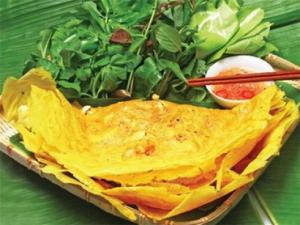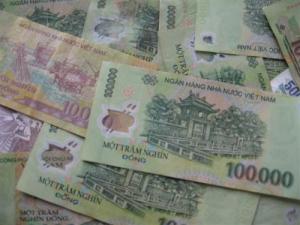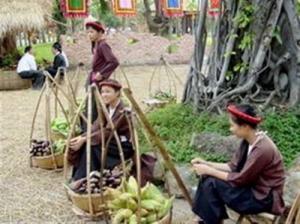Saigon Street Foods: Culture, Flavor, History

It’s no secret that Vietnam has become the food-minded traveler’s dream destination. People come to Vietnam to eat - and where do they find the best treats they talk much about in their travel journals: on the streets of the culinary capital of Saigon.
Coming to ${bigcity_Ho_Chi_Minh_City:"Saigon"} would never be complete until you have walked its street corners and tasted their interesting and tasty street meals. There is a good reason why even the most discerning diners have fallen so in love with the street cuisine of Vietnam. They’re fresh, vibrant, varied and satisfying. What’s best about it is they’re cooked on the spot, right before your eyes by someone who has been making that one particular dish over and over, for years, decades, quite possibly, generations.
Yes, these tasty treats are older than many of us, and so are the people who prepare them. They have seen many generations pass by the very streets they sell these all-time faves as well as the many memorable, happy, scary, disappointing and even funny events that happened over time.
Kiem and Her Sticky Rice Basket
The corner of Le Thanh Ton and Pasteur streets in District 1 is a very busy road at the start of the day. Motorbike-riders rushing to work and pedestrians racing by are a common sight. But another familiar sight you never fail to miss here is 81-year-old Nguyen Thi Kiem and her sticky rice basket.
Kiem is from Hai Phong City has been selling sticky rice in Saigon since 1954.No matter how fast things are happening in this side of the town, many motorists and pedestrian would take time to stop by and buy sticky rice (xôi) from her.
How she ended up selling these goodies was not a very happy story. Kiem was orphaned at a young age and moved to Saigon on her own when she was 23. She had no job options. All she had was a home recipe for sticky rice in her back pocket. Together with her husband, who is now 84, she has raised 11 children.
Selling on the same spot for the past 60 years, Kiem has witnessed many important historical events like the campaign of popular unrest against Nguyen Van Thieu, the penultimate president of South Vietnam. She sold sticky rice to many anti-war activists who staged protests and demonstrations against Thieu’s regime near her rice basket. She also served northern Vietnamese soldiers when they liberated the city.
For Kiem, the only thing that “modernization” has changed is that she now uses plastic spoons instead of the wild pandanus leaves of yesteryear. She’s become somewhat famous and foreign journalists have written features about her. She’s known for inviting such journalists into her humble home.
Phan’s Sweet Soup Trolley
Phan’s sweet soup trolley sells chè just like hundreds of others in Saigon, his place has become a favorite to many who, over the years, sees the trolley as a familiar sight near the Cho Lon Market. Folks in the neighborhood have nicknamed this sweet soup trolley Quán chè nhà ðèn (electrical station sweet soup) in the 1930s, as the shop resides in front of an old electric station on Tran Hung Dao B Street near where it intersects with Chau Van Liem Street in District 5.
Being on the same spot for several decades, families have grown to love chè from this station and have passed on the same delight to it. Many of its regular customers used to be the very kids taken by their parents to the same trolley for chè. Now, they are the ones taking their kids to the same place when they feel like having a tasty treat. The place offers almost every kind of chè. The most popular varieties are almond, green bean, red bean soup, egg custard, egg with sweet tea, lotus seed, peanut, black sesame, longan, Chinese walnut, and Gingko.
Ly Thanh Ha, the current shop owner, inherited the business from her great grandma who started the place in the 1930s. In 1936, a young girl named Phung Hanh Phan escaped from her hometown in China’s Shandong province, after losing all her family to war. She then adopted a baby girl only a few months old, named her Ly Ai Quynh and fled to Vietnam with the toddler. Due to financial constraints, Phan boarded a ship to Saigon to take a chance at life. She struggled for a long time. In 1938, desperation brought her to cooking green bean soup on the corner of Chau Van Liem and Nguyen Trai. Luckily, it became a click and her chè quickly became famous around the city.
She used her initial profits to rent a small room next to the electrical station and eventually got her own sweet soup trolley. As street vendors were often booted off the street by the colonial French government – much as they are now by the local Vietnamese government – Phan precariously took over the still-vacant front yard of the electrical station, hoping no authorities would notice.
Phan passed away in 1980s, leaving the shop for her grandchild Ly To Ha, and great grandchild Ly Thanh Ha, who runs it now. Today, the same trolley – the first and only one Phan ever bought – is still there serving hungry passers-by.
These tasty goodies have been around for a while, and so are those who cook them. Their sight, their flavorful aroma and the smiles of the vendors have become embedded into the daily rhythms of those who frequent Saigon’s streets. Sure, the convenience, affordability, and quality of Saigon’s street foods are all great, but it is the daily human interaction, the chit chat, the sense of community and the long-standing history that comes with every bite that makes this daily rhythm so soothing.









